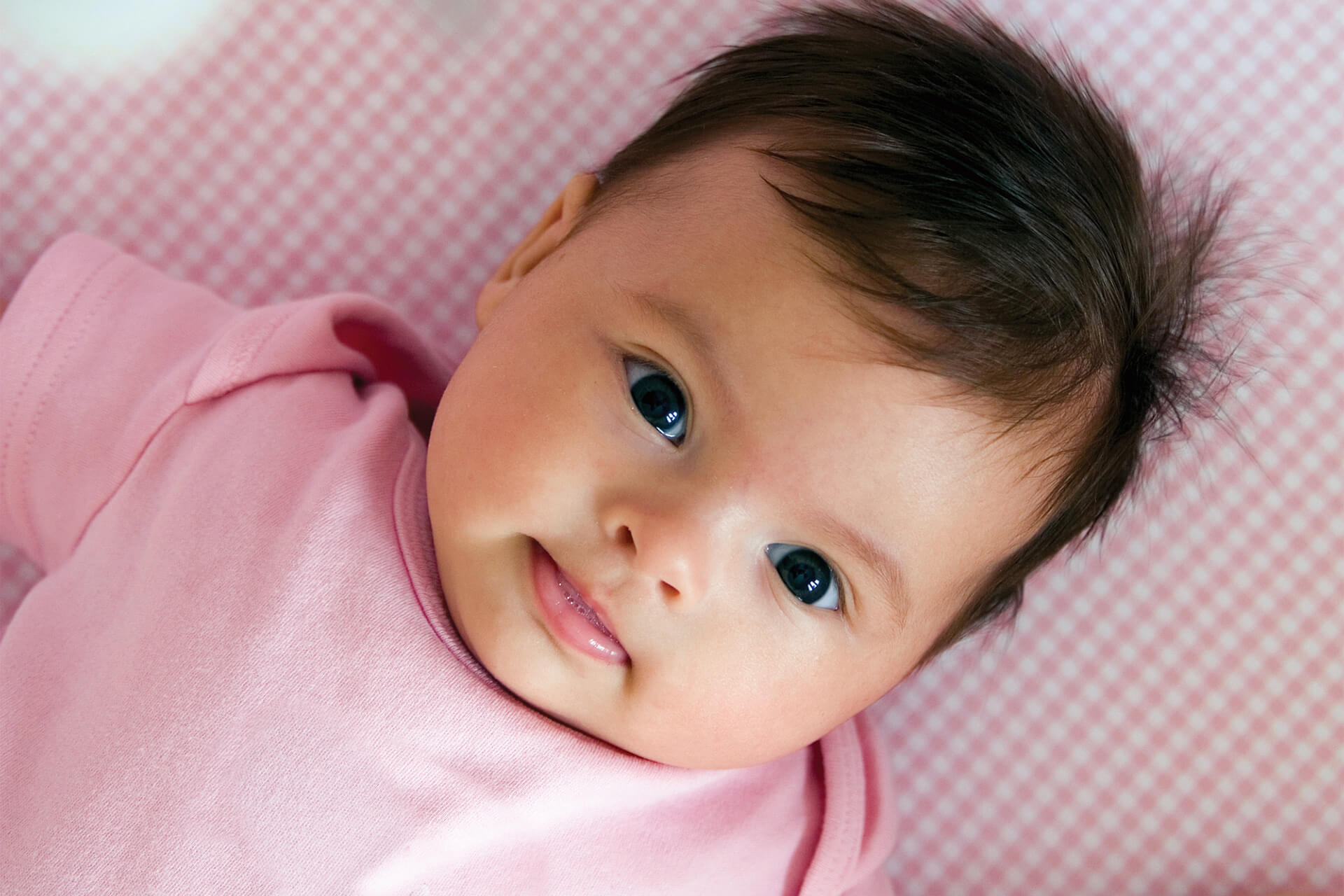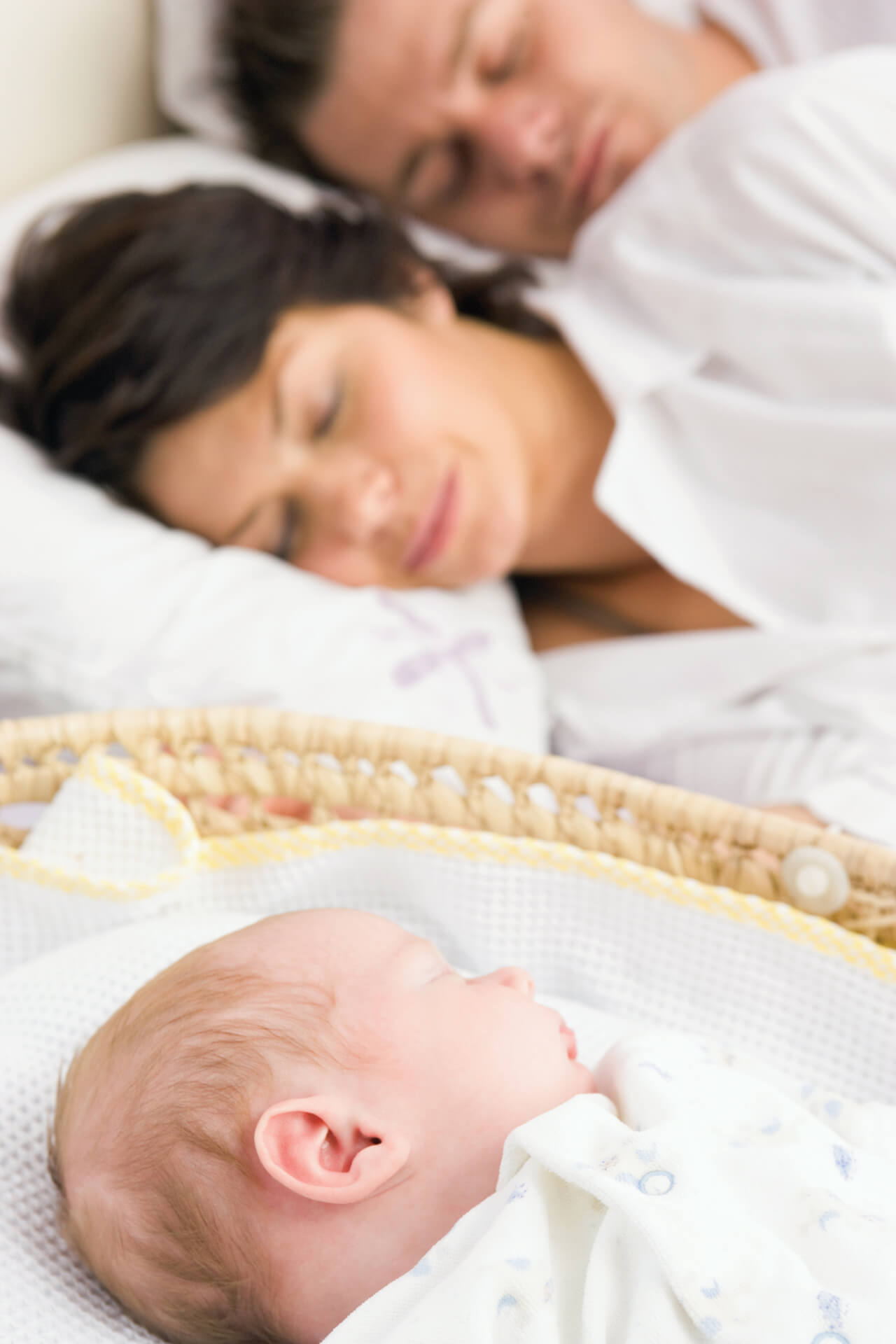
Get Your Baby “Back” to Sleep in a Safe Environment
- Home
- Live Well Blog
- Get Your Baby “Back” to Sleep in a Safe Environment
If you look at photos of your crib from when you were growing up, chances are you’d see bumper pads, a cute blanket and maybe even some stuffed animals. We now know that all those things, even though adorable, could increase the risk of a baby dying from a sleep related infant death.
Sudden Unexplained Infant Death (SUID) and Sudden Infant Death Syndrome (SIDS) are terms used to explain the sudden, unexplained deaths of babies younger than 12 months old. Sleep-related infant death is a common cause of SUID.
Since young babies can’t turn their heads, if they somehow scoot next to a toy, bumper pad, or blanket, or wedge their head between a gap in the mattress, it could prevent them from breathing.
Luckily, there are things you can do — even while pregnant — to prevent Sudden Unexplained Infant Death.


Tips from the American Academy of Pediatrics
- Always put your baby on their back when you put them to sleep. Babies in the NICU may be put on their stomach, but once home, they need to be on their backs.
- The only thing in the crib should be your baby! No toys, top sheets, blankets or bumper pads.
- The sleep surface should be firm, not squishy, with a fitted sheet on the mattress. Don’t attach anything to the slats of the crib or incline the mattress.
- Share your room, but not your bed with your baby – it can decrease the risk of SIDS by 50% in the first three months of a baby’s life. You can feed and comfort your baby in your bed, but put them to sleep in their own crib or bassinet.
- Drugs, alcohol, and sleep don’t mix with sharing the bed with your baby, even if it’s just for a little while. If you’re under the influence, avoid bringing baby to bed with you, or napping together on the couch, etc. There’s a good chance you could fall asleep, and your baby wouldn’t be safe.
- Avoid overheating your baby because it also increases the risk of sleep related infant death. Signs of overheating include sweating or when the chest feels hot to the touch.
Common Questions
What if a baby has reflux? —shouldn’t they be put on their stomach to sleep?
No, according to the American Academy of Pediatrics (AAP), all babies should be put on their backs, unless your pediatrician has told you otherwise.
Is it OK for my baby to sleep with a pacifier?
Yes! It’s good to offer a pacifier at bedtime and naptime but wait until after breastfeeding is well established. Don’t hang it around the neck or attach to clothes while sleeping. If it falls out when baby is asleep, there is no need to put the pacifier back in.
Won’t my baby be cold without a blanket?
A good rule of thumb is to dress your baby for sleep with one more layer than you are wearing when not in bed. Dress your baby in footed pajamas or in winter, a sleep sack or blanket sleeper to keep them warm. But—don’t overdress your baby because overheated babies are more at risk of SUID.
What about when my baby starts rolling over?
Continue putting them to sleep on their back but if they roll over to the stomach, it’s ok to leave them like that. You should stop swaddling when your baby starts trying to roll over—usually at around 3-4 months.
Is it ok to put baby on their tummy when awake and not in the crib?
Yes! In fact, “tummy time” is encouraged and can decrease the risk of SUID. The AAP recommends a few minutes each day of supervised tummy time soon after you bring your baby home, increasing to 15-30 total minutes a day by the time your baby is 7 weeks old.
Other Things You can do to Prevent Sleep Related Death
- Get regular prenatal care and avoid alcohol, marijuana, opioids, and illicit drugs while pregnant.
- Avoid smoking in your baby’s environment, even if you smoke outside. This includes vaping and electronic cigarettes. Keep your car and home smoke-free to keep your baby away from second-hand smoke.
- Don’t use weighted swaddle blankets or place weighted objects inside swaddle blankets.
- Don’t smoke or vape when pregnant—it’s a major risk factor for SIDS.
- Breastfeed your baby as long as possible. Breastfeeding for at least 2 months can lower your baby’s risk of SIDS by about 50%.
- Get regular prenatal care and avoid alcohol, marijuana, opioids, and illicit drugs while pregnant.
- Don’t smoke or vape when pregnant—it’s a major risk factor for SIDS.
- Avoid smoking in your baby’s environment, even if you smoke outside. This includes vaping and electronic cigarettes. Keep your car and home smoke-free to keep your baby away from second-hand smoke.
- Breastfeed your baby as long as possible. Breastfeeding for at least 2 months can lower your baby’s risk of SIDS by about 50%.
- Don’t use weighted swaddle blankets or place weighted objects inside swaddle blankets.
For more information about crib safety, see
https://www.cpsc.gov/safety-education/safety-guides/cribs/crib-safety-tips
